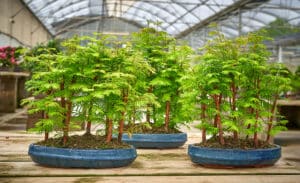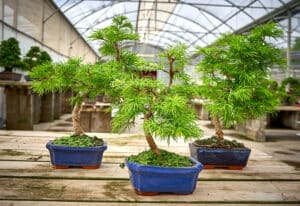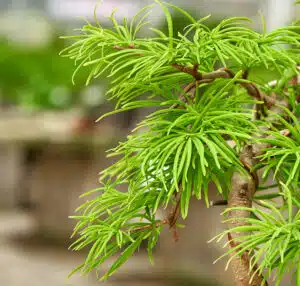Differences between the Metasequoia and Pseudolarix bonsai
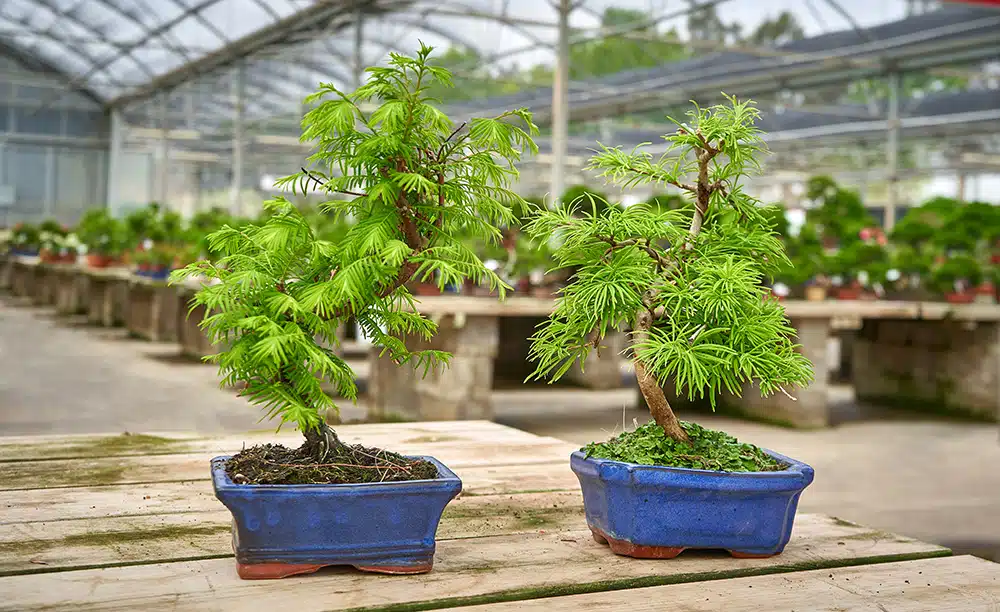
If you are a bonsai lover, you may be considering expanding your collection with a Metasequoia or Pseudolarix bonsai. Two species that are apparently, very similar. In this blog we tell you the differences between Metasequoia and Pseudolarix bonsai.
The Metasequoia, the living fossil in bonsai
The Metasequoia comes from China and is one of the oldest trees in the world. It is considered a living fossil as it was believed to be extinguished millions of years ago. However, living Metasequoia trees were discovered in China in 1940. Nowadays, they are grown all around the globe, even as bonsai.
Metasequoia bonsai have 1 to 2 cm long needles and bigger leaves than Pseudolarix bonsai. It is a resilient tree, capable of surviving in a wide variety of conditions, including poor soils and cold climates. They are a great option for areas with cold and icy winters.
Pseudolarix bonsai, the golden fir
On the other hand, the Pseudolarix originated in Japan, and it is known as “the golden fir” because of the colour of its leaves in autumn. Highly valued in the Japanese culture, it has been grown as a bonsai for centuries. Pseudolarix bonsai have shorter and thinner needles, between 0.5 and 1 cm long, light green or greenish yellow in colour. In the Japanese culture, it is considered a sacred tree and it is usually used in ceremony religions. Moreover, the Pseudolarix is a popular species in landscape gardening. Even though it has a slower growth than the Metasequoia, it can grow up to 30 m high in its natural habitat.
Differences between the Metasequoia and Pseudolarix bonsai
They are both excellent options to have at home if you live in a cold climate or in an area with cold and icy winters. Both species are resilient and can survive a wide variety of conditions, including poor soils and cold climates. Both bonsai are long-lasting and can live up to a few centuries in ideal conditions. It is said that some Metasequoia specimen in China have more than a thousand years of age.
The main differences:
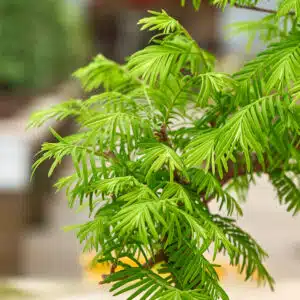
Origin: the Metasequoia originated in China, while the Pseudolarix comes from Japan. This means each tree has unique characteristics that reflect its origin.
Appearance: At first sight, the two trees can seem very similar. However, there are some subtle differences in its appearance. Metasequoia bonsai have light green needles, bigger than those of the Pseudolarix, which have shorter, thinner and light or yellowish green needles.
Growth: the Metasequoia grow faster than the Pseudolarix, which means that the Metasequoia bonsai may require more pruning and maintenance to keep their shape and form. Pseudolarix bonsai grow slower so they can be easier to maintain.
Size: the Metasequoia can grow up to 15 m high in its natural state, while the Pseudolarix can reach up to 30 m. However, as bonsai, both trees keep a much smaller size, generally around 60 cm high.
Wiring: with the Pseudolarix, it is recommended by the end of summer – autumn. With the Metasequoia, between spring and summer.
Caring: both species require similar care, such as the regular pruning, watering and fertilization.
Pseudolarix may be more appropriate for those with less experience growing bonsai because of its slow growth and its lower need for pruning and maintenance.
It is recommended to keep them outdoors whenever possible. Bonsai need natural light to live and thrive, as well as to regulate their growth and development.
In short, both trees are excellent options as bonsai. Make sure to provide them with proper light and protection to keep them healthy and beautiful for many years. Now that you know the differences between the Metasequoia and Pseudolarix bonsai, which one will you choose?
You may also be interested in…
About the Author
Mistral Bonsai
In Mistral Bonsai we are a communication team, technicians and masters committed from the first day to disseminating the wonderful art of bonsai. A world that offers many things to share. We believe that a bonsai is a tree with a soul, unique and unrepeatable. Another of our most essential pillars is, how could it be otherwise, our close commitment to the preservation of the environment and nature.
Categories
Bonsai cultivation and care (60)
Bonsai gift (2)
Bonsai pests and diseases (7)
Bonsai repotting (3)
Bonsai species (1)
bonsai substrates (2)
Bonsai summer (1)
bonsai tools (1)
Bonsai work (13)
Ceramic pots (3)
Chinese culture (1)
Chinese culture (2)
Coniferous bonsai (2)
Conifers (1)

